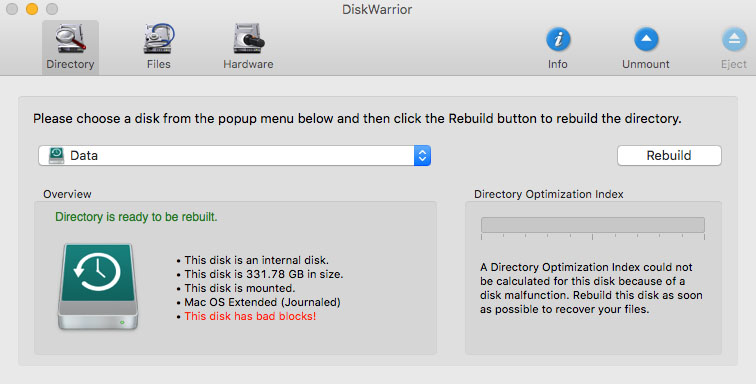
- #MAC DISK TOOL FREE HOW TO#
- #MAC DISK TOOL FREE MAC OSX#
- #MAC DISK TOOL FREE DRIVER#
- #MAC DISK TOOL FREE FREE#
- #MAC DISK TOOL FREE WINDOWS#
If a laptop is used, you can get a USB->SATA converter and it works just fine. If you plug in the disk you'll see it in "Disk Utility".

#MAC DISK TOOL FREE MAC OSX#
Mounting on MAC OS Xįor Mac OSX Users: everything works pretty similar to Linux, just use the "rdisk", e.g. The volume is now accessible under the given mount point (/mount/vmfs in the above example). When asked for the username, skip, pressing ENTER, as soon as no authentication required. Mount.davfs: warning: the server does not support locks Please enter the username to authenticate with server
#MAC DISK TOOL FREE DRIVER#
On Linux, the volume can be mounted using the davfs2 driver as follows:
#MAC DISK TOOL FREE WINDOWS#
The desired VMFS drive is successfully mounted, its content is available in read-only mode.īasically this driver is the first open solution driver to access VMFS formatted volumes from any Linux, Windows or OS-X operating system (actually from any OS that allows running Java and mounting a volume) Mounting on Linux Now you can mount the drive either through a webdav (check if the webclient service is running) or by launching your web browser and typing:

If everything goes just right and the VMFS volume that you are trying to access is not damaged so that the driver can read it, a small web server will be launched to offer you both: WEBDAV access and regular HTTP access via browser to the data on the disc. Java -jar fvmfs.jar \\.\PhysicalDrive1 webdav To hook the VMFS driver to the target drive type: Java -jar fvmfs.jar \\.\PhysicalDrive3 info

Test the VMFS driver by launching the following commands:Īssuming that your operating system assigned number 3 to a target VMWare drive, check if you can get access to it by executing: You'll need the disk number to mount it later. Run through the following steps: Computer Management - Storage - Disk Management to find a disk titled “Unknown Partition” and memorize its number.
#MAC DISK TOOL FREE HOW TO#
To make sure that everything is installed correctly, execute “java-version” on the command line.ĭownload the latest version of fvmfs.jar distribution, and unzip the file into the desired location, for example, C:\Data Store How to Runīefore you start, you have to make sure what physical drive number Windows has assigned to the VMWare drive, using Windows Disk Management. Prerequisitesįor accessing VMFS under Windows you are to have Java 6 Runtime Environment installed on your computer, as soon as all the tests, concerning this issue, were performed on it. It was tested on Linux and Windows-based hosts and is supposed to work on any platform supporting Java. The VMFS driver is supplied with command-line interface (CLI) tools to mount and analyze VMFS volumes. It recovers VMDK images created in all versions of ESX Server or VMware from healthy and corrupted VMFS disks, VMFS drives on faulty RAID arrays, and inaccessible hard drives, recovers data bypassing Windows access restrictions. If a VM disc is corrupted or you have to deal with deleted files it would be more appropriate to use VMFS Recovery™. A relative weakness of this driver that should be taken into consideration is that it works well only when the VM disks are not damaged. This VMFS Java application allows the users to access files and folders on partitions formatted with the VMFS when there are only non-VMware hosts around. So the most reasonable solution would be to access the desirable data via Open Source VMFS driver. Unfortunately, if you deal with more than one VMware server environment, you won't be able to remap the logical unit number (LUN) into another VMware system really fast. As soon as everything is based on supervisor-based virtual environments such as ESXi Server, a question of current importance suddenly pops up: is it possible to get access to VMware formatted file systems from other popular operating systems, without installing ESX/ESXi software.Ī problem emerges when you face a rapid “system down” situation, and the urgency of accessing VMFS data is crucial. ESX and ESXi Server file-locking mechanism, also known as SCSI reservation, preserves the integrity of data contained on a volume.

A dedicated virtual machine file system (VMFS) operates as both: a file system and a volume manager. This is no wonder, that VMware keeps on gaining popularity among office environments.
#MAC DISK TOOL FREE FREE#
Free VMFS Reader tool for MacOs/Windows/Linux


 0 kommentar(er)
0 kommentar(er)
